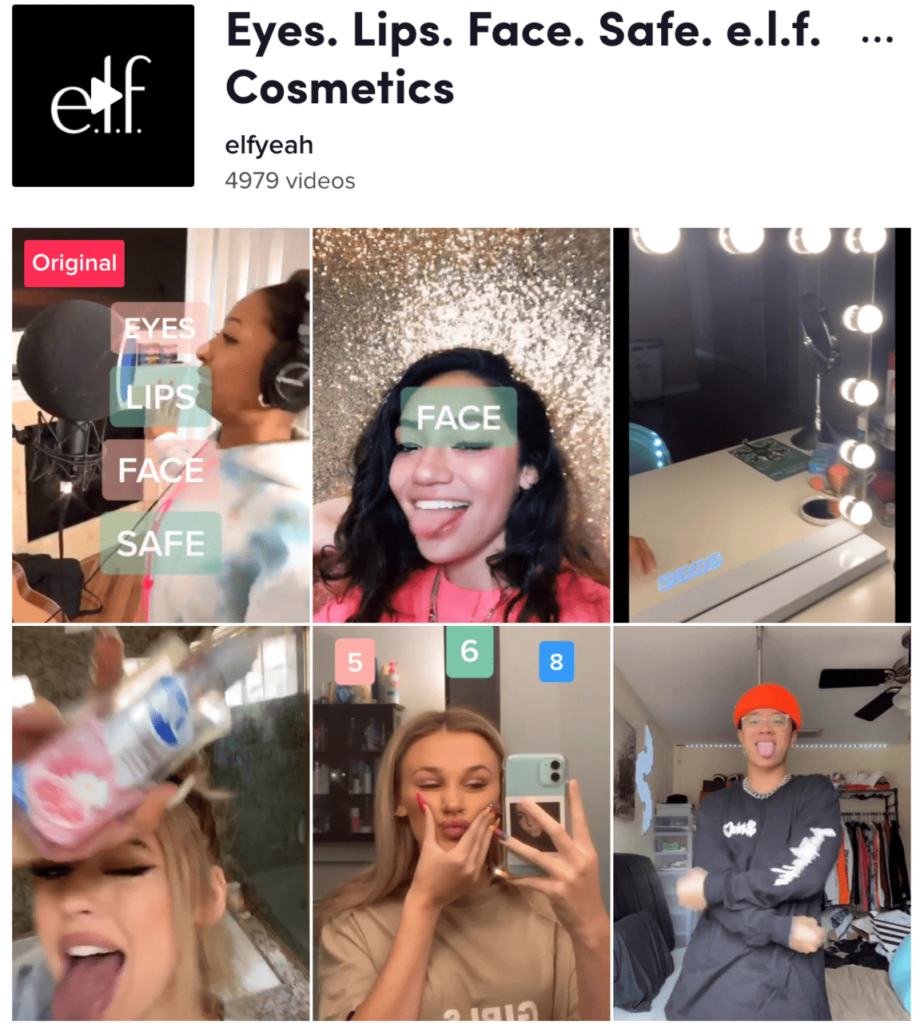Have you ever noticed a business on Instagram or Facebook that has garnered thousands of customers and become a household name? Does it surprise you how people and brands use innovative social media techniques to earn money? Isn’t it amazing how platforms that were initially thought of as sources of entertainment are now a hub for social commerce?
But what is social commerce, and how can you delve into it, bringing your business to new heights of growth and profitability? In this overview, let’s understand the concept of social commerce and find out ways in which businesses can use it.
What is Social Commerce?
Social commerce is the buying and selling of products and services on social media platforms like Facebook, Instagram, TikTok, Snapchat, Twitter (X), YouTube, etc. Businesses are allowed to launch an online shop and then display products and integral links to their shops. This information can be shared with existing consumers and the target audience through effective content on social media channels.
Not only selling, but social commerce also includes buying, creating content, marketing, strategizing, and delivering exceptional customer service within social media apps. It is as simple as posting a product like a t-shirt brand on a social media app. The customer clicks on the item, adds it to his cart, makes the payment, and completes the purchase.
Some simple examples of social commerce in our everyday lives are:
- Ordering Domino’s Pizza via automated Facebook Messenger
- Shopping for Lo’real or Nykaa Cosmetics on Instagram
- Nike using Product Pins on Pinterest

Critical Facts About Social Commerce
If you are still doing a traditional style of business and have still not ventured into social commerce, you have reached the right place.
This is the best time to start as it has been anticipated that the social commerce industry will reach $1.2 trillion by 2025, which is three times faster growth than traditional ecommerce.
- It has been researched that, on average, a person spends about 2 hours and 40 minutes on social media.
- The social commerce rate had risen by 23.6% in 2023 and is estimated to grow by another 5% by 2028.
- 26% of the participating businesses claimed that they would invest more than 40% of their marketing budget into influencer marketing activity.
Considering these facts, it’s no surprise that social commerce is opening up new revenue streams and innovative shopping experiences across various channels. Today, businesses have a fresh perspective to engage with customers like never before.
Let us jump right into the fundamentals of social commerce and how you can craft an effective strategy of your own.
How Does Social Commerce Work?
It is important to note that today, 82% of millennials, 73% of Gen Z, and 63% of Gen X use their smartphones for social commerce.
Businesses use the top two marketing strategies for social media:
- User-generated content to highlight their products and services and feature their brand relevance
- Influencer marketing to tap into new audiences
A social commerce strategy involves the use of the top three trends:
- AI integration
- In-person events
- Retailer partnerships
These trends aim to allow consumers to discover products, browse entire stores, and make purchases directly within the social app. Social commerce enables direct selling through social media platforms, where businesses can streamline the purchasing process. By having social media shops, businesses can reduce cart abandonment rates and enhance the sense of collaboration on social platforms.
Social Commerce vs. eCommerce
Social commerce is a part of e-commerce that empowers shoppers to make purchases directly within the social media platform using different payment methods.
On the other hand, e-commerce means selling through the brand’s website, which can be shared through social media platforms. Social commerce is direct shopping, while e-commerce is indirect shopping.
Here are some common social commerce strategies:
1. Social Commerce Posts
Content is king even today. Enticing, entertaining, informative, and educational posts on social media platforms allow users to browse and purchase products directly from social media apps. You can tag products in images or videos and offer a hassle-free purchasing experience on various platforms.
2. Social Commerce Ads
Social commerce ads on different social media channels target specific audiences and are often part of paid social campaigns. They remind potential customers of products they viewed and encourage them to make a purchase directly from the ad.
3. Storefronts
Some social media apps enable businesses to create shops or storefronts within their profiles. This offers brands a social commerce experience directly on the platform. It becomes easier for businesses to curate product collections and drive product discovery.
4. Influencer Marketing
Businesses can collaborate with social media influencers to promote products and increase brand visibility. Influencers tag products in their posts, and interested customers can directly reach the product page and make a purchase.
5. Live shopping
Live shopping adds a personal touch to social commerce as it allows brands to interact with customers in real-time. Brands can showcase products, answer questions, and facilitate purchases through shoppable posts during live streams.
6. In-app messaging
Brands can now use direct messaging on social media platforms, which allows the target audience and existing customers to ask questions and receive product assistance. It facilitates product discovery and enables quick checkouts through payment links.
Top Social Commerce Platforms
Several platforms are leading the way in social commerce. According to EMARKETER, Facebook is the most popular social media platform and is expected to reach 64.6 million buyers in 2024. Instagram comes next, with approximately 46.8 million buyers in 2023. TikTok stands third, with 35.3 million users buying on the platform.
Let’s check out the top social media platforms for social commerce:
1. Facebook
Facebook offers features like Facebook Shops, which allows businesses to create online storefronts where customers can browse and buy products directly within the platform. It also provides options for live video shopping and native checkout, streamlining the shopping experience for users.
Creating an account on Facebook Shops is free, but Facebook charges a fee for transactions processed through its checkout. Facebook’s wide range of social commerce tools empowers businesses to establish an online presence and connect with customers.
To boost efforts on Facebook, brands can explore Dynamic Ads, Collaborative Ads, Collection Ads, and Product Tags to enhance product visibility. Consider how Glamnetic regularly runs live videos on Facebook, with product demonstrations and pro tips for its community. It also makes exclusive offers for viewers.

2. Instagram
Instagram offers digital storefronts called ‘Shops’ using which businesses can convert products into themes such as new arrivals, gifts, or seasonal trends. Brands can use this feature of Instagram to provide consumers with relevant information and purchase products without leaving the Instagram app.
Businesses can feature products directly in Instagram images or videos and help their audiences complete the checkout process with a single tap. You can also announce new product drops through ‘Product Launches’ to prepare customers for upcoming releases. Instagram Shops offers amazing features like live stream shopping and AR shopping on Snapchat.
For example, check out how ‘Girlfriend Collective‘ promotes its sustainable, ethical activewear made from recycled water bottles by showcasing different sizes and preferences. Their content is based on diversity, Sustainability, body positivity, and beautiful nature spaces, which builds hype around their product launches.

3. Snapchat
Snapchat embraces social commerce through innovative augmented reality experiences. Brands can collaborate with Snapchat to create lenses for users to virtually try on clothing, accessories, home décor items, and more. Customers have the leverage to purchase directly through Snapchat’s online store.
Snapchat users engage with AR over 6 billion times daily, and 93% are interested in using AR for shopping. Snapchat also offers traditional shopping options. Select accounts can create stores within Snapchat and maintain robust Profiles with shopping links.
4. TikTok
TikTok expands its social commerce capabilities, including live shopping, product tagging, storefronts, and more. These updates empower brands to drive conversions through various solutions.
See how e.l.f Cosmetics’ “Eyes Lips Face” challenge is one of the most successful marketing campaigns on TikTok, which attracted over 3 million user-generated videos and more than 4 billion views.

5. Twitter (X)
With more than 100 million daily active users, Twitter now X offers vast opportunities for ecommerce brands. This platform experiments with social commerce and introduces the “Shop” button on tweets and a Shopping Card. Such innovations enhance the platform’s presence.
Let us look at the example of GE which specifically uses X to share their expertise and excite people about their newest innovations, especially since they are an organization focused on the future of energy.

6. Pinterest
Pinterest users are highly engaged, as the channel offers exceptional social commerce integrations. It includes catalogs, product groups, Dynamic Shopping Ads, and Shoppable Collection Ads, which highlight the essence of shopping experiences.
Let us look at the example of Rothy’s, which is an eco-friendly fashion brand famous for its washable shoes and bags. Rothy’s focuses on colorful lifestyle photos with product tags. On Pinterest, Rothy’s visuals are more polished, which complements the brand’s look.

Best Practices for Employing Social Commerce Strategy
Here are some tips and techniques for businesses to lucratively employ social commerce strategies:
1. Understand Your Audience
It is paramount for businesses to curate their social commerce approach to fit their target audience. Analyze demographic and performance data, identify products that resonate best with the audience, and learn how to present them.
2. Create Compelling Storefronts
Treat your social media profiles as digital storefronts. Craft an engaging ambiance that complements your product offerings to leave a lasting impression on visitors.
3. Consistent Promotional Posts
Share promotional content consistently to showcase product details. Ralph Lauren, for instance, effectively promotes its seasonal collection by combining various products in a single post, offering shoppers a glimpse of how items can be styled together.
4. Personalize Customer Interaction
Humanize your responses to customer inquiries on social media by offering personalized recommendations, direct purchase links, or exclusive promo codes.
5. Ensure Proper Tracking
Set up pixels and conversion API integrations correctly to track essential events and actions accurately. This ensures that your ads are optimized and you can measure results effectively
6. Optimize Your Product Feed
Ensure your product feeds are accurate and up-to-date. A well-maintained product feed is crucial for various social commerce opportunities like dynamic product ads and live shopping.
7. Enable Product Tags
Make your posts shoppable by enabling product tags, allowing users to explore and purchase products directly from their feed. This seamless shopping experience enhances user engagement and conversion rates.
Step-by-Step Guide to Social Commerce
Here are some simple steps to excel in social commerce strategies:
Step 1: Maintain Brand Consistency
Consistency is vital in social commerce. Ensure that your brand’s identity remains consistent across all social platforms, including logos, colors, messaging, and tone. Create a brand identity guide that will help you maintain consistency in content creation and design.
Step 2: Craft a Goal-Oriented Plan
Define a clear social media strategy that aligns with your goals before creating content. Research the platforms that best suit your brand and audience, considering trends, user behavior, and industry standards.
Step 3: Allocate Budget Wisely
Allocate funds to cover expenses related to creating stores and advertising products. Define measurable goals to track the effectiveness of your campaigns and adjust budgets accordingly.
Step 4: Engage Authentically with Customers
Authentic engagement builds trust and loyalty. Businesses must respond to comments, share user-generated content, and interact with potential customers to establish meaningful connections. Brands must also reach out to prospects and engage with relevant industry content to expand their reach.
Step 5: Invest in Paid Advertising
Paid advertising can significantly enhance your efforts. Experiment with various ad formats, including livestream product promotions, influencer marketing, video ads, and personalized collection ads. You must also use user-generated content for authentic advertising that matches your audience.
Step 6: Implement Conversion-Boosting Strategies
To increase conversions, focus on optimizing product descriptions, offering social proof through reviews and testimonials, and leveraging limited-time offers or promotions to encourage action.
Step 7: Analyze and Optimize Performance:
Brands must monitor key metrics and analytics to evaluate the performance of their campaigns. You can conduct A/B testing to optimize product listings and advertisements based on insights gained. You must also analyze performance data, customer feedback, and market trends to identify areas for improvement.
Conclusion
Social commerce enables brands to sell directly on social media platforms. It is a game-changer for online shoppers and digital sellers. Moreover, it eliminates the hassle of transitioning from social platforms to online stores.
It is like shopping from a digital store that never closes. When indulging in social commerce, unravel the power of influencers and user-generated content and celebrate each milestone along the way.
If you want to learn more about social commerce and explore emerging trends and technologies, consult the pioneers at Predis.ai!















